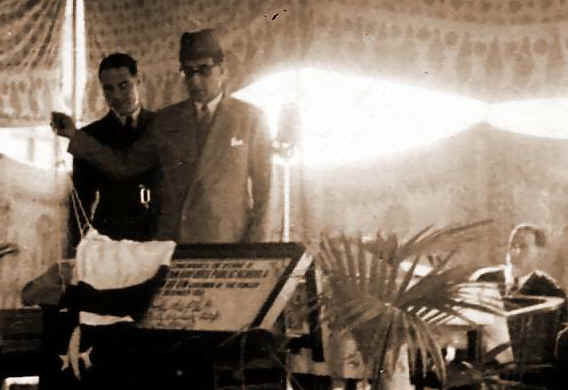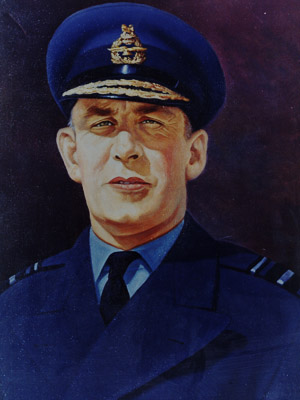 PAF College Sargodha was established in December 1952 by AST (Air Service Training Limited) South Hampton, United Kingdom and started functioning from February 1953. The story of PAF College began in 1950 when AVM Atecherly (1949-1951), in his first ever meeting with Air Cdre Janjua, Officer Incharge of RPAF, discussed his concern about the training aspect of the new developing Air Force in Pakistan. In India, there were already two schools, Cranwell and RIMC were working but there was no such school or institution in Pakistan which was comparable with the above mentioned institutions. To address the issue, the first meeting was held in October 1950 at the office of the high commissioner of Pakistan London, under the chairmanship of AVM Atecherly. This meeting was attended by the secretary defense, Mr. Iskander Mirza, the financial advisor of the high commissioner, the director of educational services and the two directors of Air Service Limited. Establishment of two schools in Pakistan was suggested, following which Gp Capt R.J.F Barton, then managing director of AST, invited Mr. Crichton (Headmaster of Fettes College) and Mr. George. A. Ridding (Former Headmaster of Aldenham School) to investigate the possibilities and difficulties of the project.
PAF College Sargodha was established in December 1952 by AST (Air Service Training Limited) South Hampton, United Kingdom and started functioning from February 1953. The story of PAF College began in 1950 when AVM Atecherly (1949-1951), in his first ever meeting with Air Cdre Janjua, Officer Incharge of RPAF, discussed his concern about the training aspect of the new developing Air Force in Pakistan. In India, there were already two schools, Cranwell and RIMC were working but there was no such school or institution in Pakistan which was comparable with the above mentioned institutions. To address the issue, the first meeting was held in October 1950 at the office of the high commissioner of Pakistan London, under the chairmanship of AVM Atecherly. This meeting was attended by the secretary defense, Mr. Iskander Mirza, the financial advisor of the high commissioner, the director of educational services and the two directors of Air Service Limited. Establishment of two schools in Pakistan was suggested, following which Gp Capt R.J.F Barton, then managing director of AST, invited Mr. Crichton (Headmaster of Fettes College) and Mr. George. A. Ridding (Former Headmaster of Aldenham School) to investigate the possibilities and difficulties of the project.  The two experts, accordingly visited Navy, Army and Air Force training schools and colleges and consulted educational officials. In March 1951, they reported their findings on behalf of AST, to Mr. Liaqat Ali Khan, then the Prime Minister of Pakistan. The recommendations of the report were accepted and were implemented. It was decided that two schools will be established, a pre cadet school for 250 boys from ages 11 to 17 years, and a pre apprentice school for 450 boys from ages 11 to 15 years.
The two experts, accordingly visited Navy, Army and Air Force training schools and colleges and consulted educational officials. In March 1951, they reported their findings on behalf of AST, to Mr. Liaqat Ali Khan, then the Prime Minister of Pakistan. The recommendations of the report were accepted and were implemented. It was decided that two schools will be established, a pre cadet school for 250 boys from ages 11 to 17 years, and a pre apprentice school for 450 boys from ages 11 to 15 years.
Most of the boys from former school will proceed as officer cadet to Risalpur and those from later will become apprentice technicians at Korangi Creek Karachi (the AST managed RPAF apprentice school) The aim was to give basic education and character training, with only a slight bias towards vocational needs and thus they will be open to not only intending RPAF, Navy or the civil services. The two schools were to be built at Sargodha and Lower Topa respectively and were to be named as “Public Service School”. It was also decided that the school buildings will adjoin an airfield. According to the plan, initially the principal, the heads of the departments and approximately two third of the teaching staff was to be British but they will be replaced within 10 years as soon as teaching patterns and traditions of the school becomes established, the whole staff will be Pakistani.
It was also decided that English will be the medium of instruction throughout the school but Urdu will also be taught. The curriculum was designed in such a way as by the end of third year, the boys were able to take matriculation exams of the University of the province and at the end of the fourth year, the boys were able to take overseas junior certificate of the Cambridge Local examination syndicate or its equivalent.